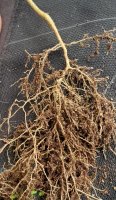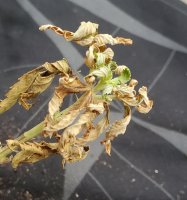it's not mine
Well-Known Member
This is a great thread. My 3 seedlings had stopped growing and they were also stretching. Didn't know what to do. I then read this thread and realized my error of over-watering. So it took three days for the plants to droop. I gave them a good watering this morning and now they're looking healthier than ever!






 Emilya You are a gift to us all and have earned your way into the "Big Farm" in the sky many times over. I love your thoroughness but I can't re-read all these pages to find your addendum concerning watering a flowering plant, if you would be so kind as to direct me
Emilya You are a gift to us all and have earned your way into the "Big Farm" in the sky many times over. I love your thoroughness but I can't re-read all these pages to find your addendum concerning watering a flowering plant, if you would be so kind as to direct me

 I will probably re-read your amendment a few times over to insure that I have it down pat, then sit in my bedroom staring out at my girls like a nervous parent poolside at their Childs first swimming lesson, Will they sink or swim?
I will probably re-read your amendment a few times over to insure that I have it down pat, then sit in my bedroom staring out at my girls like a nervous parent poolside at their Childs first swimming lesson, Will they sink or swim?